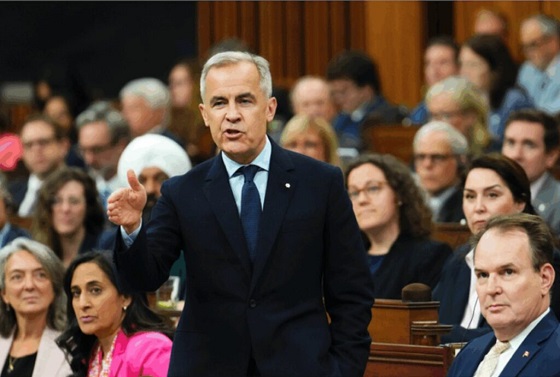Alberta
Clean tech innovation cuts emissions, creates jobs

March 12, 2019
Alberta’s Climate Leadership Plan is helping major industries reduce emissions and create jobs while cutting costs and becoming more competitive.
Emissions Reduction Alberta is funding more than a dozen new clean technology projects across the province, while Energy Efficiency Alberta is supporting small and medium-sized oil and gas companies to reduce methane emissions through upgrades.
“Innovation is a key part of Alberta’s economic and environmental success, and our industries continue to show tremendous leadership. Clean technology investments lead to made-in-Alberta solutions that support jobs, protect our environment, and point Alberta toward a healthy, prosperous future.”
Emissions Reduction Alberta (ERA)
From Fort McMurray to Waterton, 16 innovative clean technology projects will receive funding through ERA’s $100-million Biotechnology, Electricity and Sustainable Transportation (BEST) Challenge – the largest challenge in ERA’s history.
These projects have a combined value of $600 million and the potential to reduce a total of 2.5 million tonnes of greenhouse gas emissions by 2030 – the same as taking 530,700 cars off the road. These projects will also result in 114 new jobs.
“Our BEST Challenge is about accelerating the most promising clean technology solutions across multiple sectors – from new solar opportunities in coal-impacted communities to efficient fleet solutions. These projects will be a showcase for innovative technologies that can be adopted in communities across Alberta. They support economic growth, community health and demonstrate environmental leadership on a national and global scale.”
The Alberta Motor Transport Association (AMTA) is working to develop and demonstrate a 700-kilometre-plus-range zero emission truck. These trucks will reduce greenhouse gas emissions through improved fuel efficiency of the fuel cell hybrid drivetrain. Sequestering carbon at the hydrogen generation facility will result in even greater emissions reductions.
“This is a very exciting project for the AMTA and our member companies. This initiative is primarily about moving freight on Alberta’s highways with zero emissions, but it is also about the future of the Alberta economy. Alberta is in the transportation fuel business, and that business is changing. The AZETEC project demonstrates that Alberta’s commercial transportation industry is leading the transition towards innovative, zero-emission transportation that meets the province’s unique needs.”
Another funding recipient, eCAMION, is working on a project to transition Alberta’s buses from diesel to electric. Its first-of-a-kind charging system could lower installation and operating costs, encouraging broader and faster adoption across the province. eCAMION will partner with the City of Edmonton on a trial of its fast-charge technology. A complete list of BEST Challenge projects is available here.
Energy Efficiency Alberta (EEA)
Government is providing an additional $5 million to support the continued success of EEA’s popular $10-million Methane Emissions Reduction initiative.
The program has already made it easier for 30 small and medium-sized oil and gas companies to address methane waste through energy-efficient equipment upgrades, which also helps facilities hire more staff, reduce annual emissions and boost competitiveness. To date, 2,534 applications are approved, with at least 1,500 more anticipated by March 31, 2019.
“Through methane-reduction education and deployment of existing technologies, companies ultimately have the ability to become more competitive and efficient. This announcement will result in a great collaboration to further our methane-reduction programming for the oil and gas sector.”
The funding boost will also support a $1.5-million grant for the Petroleum Technology Alliance of Canada to introduce technologies that reduce methane emissions. The grant is expected to reduce up to 200,000 tonnes of emissions – the same as taking 42,460 cars off the road.
“Energy Efficiency Alberta’s Methane Emissions Reduction initiative is a momentous step towards a massive deployment of proven, cost-effective, economic methane-mitigation technologies that will benefit our people, planet and industry. It will enable producers – large and small – to maintain competitiveness, while helping Alberta’s entrepreneurs and small technology providers prosper and create jobs.”
“EEA’s Methane Emissions Reduction Program continues to improve the province’s emissions inventory while growing local jobs and incentivizing capital investment in Alberta-based emission-reduction projects. We look forward to continuing to contribute to the success of this program and working with industry to implement emission-reduction technologies.”
Quick facts
- The biotechnology, electricity and sustainable transportation sectors account for more than 40 per cent of Alberta’s annual greenhouse gas emissions.
- ERA takes action on climate change and supports economic growth and diversification by investing carbon pricing paid by industry directly into clean technology solutions that reduce emissions, attract investment and create jobs. To date, ERA has committed more than $572 million in funding to 164 projects with a total value of roughly $4.3 billion.
- The climate change impact of methane is 25 times greater than carbon dioxide over a 100-year period. Methane emissions in 2014 from Alberta’s oil and gas sector accounted for 70 per cent of provincial methane emissions, and 25 per cent of all emissions from the upstream oil and gas sector.
- The Methane Emissions Reduction Program was announced in October 2018, and 60 per cent of the first year’s budget has already been committed. The program received three dozen applications in the first six weeks.
Alberta
Danielle Smith slams Skate Canada for stopping events in Alberta over ban on men in women’s sports

From LifeSiteNews
The Alberta premier has denounced Skate Canada as ‘disgraceful’ for refusing to host events in the province because of a ban on ‘transgender’ men in women’s sports.
Alberta Premier Danielle Smith has demanded an apology after Skate Canada refused to continue holding events in Alberta.
In a December 16 post on X, Smith denounced Skate Canada’s recent decision to stop holding competitions in Alberta due to a provincial law keeping gender-confused men from competing in women’s sports.
“Women and girls have the right to play competitive sports in a safe and fair environment against other biological females,” Smith declared. “This view is held by a vast majority of Albertans and Canadians. It is also common sense and common decency.”
Women and girls have the right to play competitive sports in a safe and fair environment against other biological females.
This view is held by a vast majority of Albertans and Canadians. It is also common sense and common decency.
Skate Canada‘s refusal to hold events in… pic.twitter.com/n4vbkTx6B0
— Danielle Smith (@ABDanielleSmith) December 16, 2025
“Skate Canada‘s refusal to hold events in Alberta because we choose to protect women and girls in sport is disgraceful,” she declared.
“We expect they will apologize and adjust their policies once they realize they are not only compromising the fairness and safety of their athletes, but are also offside with the international community, including the International Olympic Committee, which is moving in the same direction as Alberta,” Smith continued.
Earlier this week, Skate Canada announced their decision in a statement to CBC News, saying, “Following a careful assessment of Alberta’s Fairness and Safety in Sport Act, Skate Canada has determined that we are unable to host events in the province while maintaining our national standards for safe and inclusive sport.”
Under Alberta’s Fairness and Safety in Sport Act, passed last December, biological men who claim to be women are prevented from competing in women’s sports.
Notably, Skate Canada’s statement failed to address safety and fairness concerns for women who are forced to compete against stronger, and sometimes violent, male competitors who claim to be women.
Under their 2023 policy, Skate Canada states “skaters in domestic events sanctioned by Skate Canada who identify as trans are able to participate in the gender category in which they identify.”
While Skate Canada maintains that gender-confused men should compete against women, the International Olympic Committee is reportedly moving to ban gender-confused men from women’s Olympic sports.
The move comes after studies have repeatedly revealed what almost everyone already knew was true, namely that males have a considerable innate advantage over women in athletics.
Indeed, a recent study published in Sports Medicine found that a year of “transgender” hormone drugs results in “very modest changes” in the inherent strength advantages of men.
Additionally, male athletes competing in women’s sports are known to be violent, especially toward female athletes who oppose their dominance in women’s sports.
Last August, Albertan male powerlifter “Anne” Andres was suspended for six months after a slew of death threats and harassments against his female competitors.
In February, Andres ranted about why men should be able to compete in women’s competitions, calling for “the Ontario lifter” who opposes this, apparently referring to powerlifter April Hutchinson, to “die painfully.”
Interestingly, while Andres was suspended for six months for issuing death threats, Hutchinson was suspended for two years after publicly condemning him for stealing victories from women and then mocking his female competitors on social media. Her suspension was later reduced to a year.
Alberta
Alberta’s huge oil sands reserves dwarf U.S. shale

From the Canadian Energy Centre
By Will Gibson
Oil sands could maintain current production rates for more than 140 years
Investor interest in Canadian oil producers, primarily in the Alberta oil sands, has picked up, and not only because of expanded export capacity from the Trans Mountain pipeline.
Enverus Intelligence Research says the real draw — and a major factor behind oil sands equities outperforming U.S. peers by about 40 per cent since January 2024 — is the resource Trans Mountain helps unlock.
Alberta’s oil sands contain 167 billion barrels of reserves, nearly four times the volume in the United States.
Today’s oil sands operators hold more than twice the available high-quality resources compared to U.S. shale producers, Enverus reports.
“It’s a huge number — 167 billion barrels — when Alberta only produces about three million barrels a day right now,” said Mike Verney, executive vice-president at McDaniel & Associates, which earlier this year updated the province’s oil and gas reserves on behalf of the Alberta Energy Regulator.
Already fourth in the world, the assessment found Alberta’s oil reserves increased by seven billion barrels.
Verney said the rise in reserves despite record production is in part a result of improved processes and technology.
“Oil sands companies can produce for decades at the same economic threshold as they do today. That’s a great place to be,” said Michael Berger, a senior analyst with Enverus.
BMO Capital Markets estimates that Alberta’s oil sands reserves could maintain current production rates for more than 140 years.
The long-term picture looks different south of the border.
The U.S. Energy Information Administration projects that American production will peak before 2030 and enter a long period of decline.
Having a lasting stable source of supply is important as world oil demand is expected to remain strong for decades to come.
This is particularly true in Asia, the target market for oil exports off Canada’s West Coast.
The International Energy Agency (IEA) projects oil demand in the Asia-Pacific region will go from 35 million barrels per day in 2024 to 41 million barrels per day in 2050.
The growing appeal of Alberta oil in Asian markets shows up not only in expanded Trans Mountain shipments, but also in Canadian crude being “re-exported” from U.S. Gulf Coast terminals.
According to RBN Energy, Asian buyers – primarily in China – are now the main non-U.S. buyers from Trans Mountain, while India dominates purchases of re-exports from the U.S. Gulf Coast. .
BMO said the oil sands offers advantages both in steady supply and lower overall environmental impacts.
“Not only is the resulting stability ideally suited to backfill anticipated declines in world oil supply, but the long-term physical footprint may also be meaningfully lower given large-scale concentrated emissions, high water recycling rates and low well declines,” BMO analysts said.
-

 Digital ID2 days ago
Digital ID2 days agoCanada releases new digital ID app for personal documents despite privacy concerns
-

 Energy2 days ago
Energy2 days agoCanada’s sudden rediscovery of energy ambition has been greeted with a familiar charge: hypocrisy
-

 Bruce Dowbiggin2 days ago
Bruce Dowbiggin2 days agoNFL Ice Bowls Turn Down The Thermostat on Climate Change Hysteria
-

 Daily Caller23 hours ago
Daily Caller23 hours agoParis Climate Deal Now Decade-Old Disaster
-

 Business13 hours ago
Business13 hours agoOttawa Pretends To Pivot But Keeps Spending Like Trudeau
-

 armed forces1 day ago
armed forces1 day agoOttawa’s Newly Released Defence Plan Crosses a Dangerous Line
-

 Energy12 hours ago
Energy12 hours agoLiberals Twisted Themselves Into Pretzels Over Their Own Pipeline MOU
-

 Censorship Industrial Complex10 hours ago
Censorship Industrial Complex10 hours agoHow Wikipedia Got Captured: Leftist Editors & Foreign Influence On Internet’s Biggest Source of Info









